10 Tips for Efficient Kayak Paddling
Efficient paddling can transform your kayaking experience, helping you conserve energy, paddle longer, and stay comfortable. The key lies in proper technique, posture, and equipment. Here’s a quick summary:
- Posture Matters: Sit upright, lean slightly forward, and adjust foot pegs for stability.
- Use Your Core: Engage your torso, not just your arms, for more power and endurance.
- Perfect the Forward Stroke: Rotate your body, keep the paddle vertical, and avoid over-gripping.
- Feather Your Paddle: Adjust blade angles to reduce wind resistance and save energy.
- Master Turns: Use sweep strokes for smooth direction changes.
- Learn the Draw Stroke: Move sideways efficiently for docking or tight spaces.
- Brace for Stability: Practice low and high braces to recover from tipping.
- Position Your Feet Correctly: Proper foot placement improves control and comfort.
- Stay Calm: Focus on breathing and rhythm to maintain efficiency under pressure.
- Choose the Right Kayak: Match your kayak to your paddling goals and environment.
How To Get the Most From Your Forward Stroke - Kayak Technique
1. Keep Good Posture
Good posture is the backbone of efficient kayaking - literally. Sit upright with a straight back and relaxed shoulders to get the most out of your paddling efforts.
When paddling, tilt your upper body slightly forward rather than sitting completely upright. This forward lean not only keeps your spine aligned but also helps you generate more power with each stroke. It’s a small adjustment that makes a big difference.
Make sure your foot pegs are adjusted to provide firm support. This setup encourages a straight back and that slight forward lean. Keep your knees bent; if you're in a sit-in kayak, press your thighs and knees against the cockpit for added stability. For sit-on-top kayaks, maintain bent knees and use thigh straps, if available, to help maintain proper alignment. This positioning helps your muscles work efficiently.
By maintaining good posture, you engage your core, back, and leg muscles, reducing the strain on your arms and shoulders. This balanced use of muscle groups allows you to paddle longer without wearing yourself out.
On the flip side, poor posture - like slouching or hunching - puts unnecessary stress on your lower back and limits your ability to rotate your torso. This makes paddling harder and less efficient.
Take a moment every now and then to check your posture. Small adjustments can go a long way in keeping you comfortable and effective throughout your kayaking session.
2. Perfect Your Forward Stroke
Mastering the forward stroke is key to efficient kayaking. A well-executed stroke transforms arm strain into effective propulsion, helping you conserve energy and paddle longer. The secret? Powering your stroke with torso rotation instead of just your arms.
The forward stroke consists of three phases: the catch (when the paddle enters the water), the power phase (as you pull through the water), and the recovery (lifting the paddle back out). These phases work together to create smooth, efficient movement.
Start by focusing on torso rotation. As coach Shawna Franklin explains:
"Rotation starts at the sit bones. Most paddlers lock their pelvis into a forward-only position during the forward stroke, rotating from just the belly button up. This doesn't engage all of the core muscles. Use a slippery seat pan that allows your hips to slide when rotating."
This technique is crucial for generating power. In sprint kayaking, legs contribute about 85% of the drive, while in sea kayaking, they still account for roughly 60%. That means more than half of your power comes from your lower body, not just your arms.
Begin each stroke by pressing against the foot peg on the same side as your paddle blade. Let this motion flow through your core and into your paddle. According to REI's experts:
"Focus on using your strong core muscles to power your stroke rather than the weaker muscles of your arms. Your muscles will tire quickly if you're not using proper technique. You'll also be more prone to injury."
Keep the paddle blade vertical and fully immersed in the water. Your pulling arm should remain nearly straight throughout the stroke. If you notice your biceps doing most of the work, you're likely "arm-paddling" instead of rotating properly.
Grip your paddle lightly - over-gripping leads to faster fatigue and poor technique. Your hands should act as a link between your core and the paddle, not as the primary source of power.
Watch out for inefficiencies that can sap your energy. Avoid lunging your torso forward instead of rotating, as this causes your kayak to bounce and lose speed. Similarly, over-rotating can make the kayak sway side to side, slowing you down. Aim for controlled, smooth rotation to keep your kayak tracking straight.
The beauty of proper forward stroke technique lies in using your larger abdominal muscles rather than your smaller arm muscles. This approach allows you to paddle farther with less fatigue and generate more power with each stroke.
3. Engage Your Core Muscles
Once you've mastered the forward stroke, the next step to efficient paddling is harnessing the power of your core. Your core muscles are the engine behind effective kayaking, and relying on them can make all the difference. Many paddlers mistakenly overuse their arms, which leads to faster fatigue and less control. Instead, when you engage your core, you’ll paddle farther, with greater ease and stability. By combining core activation with proper forward stroke technique, you create a more fluid and powerful paddling motion.
Think of your core as the bridge that transfers energy from your lower body to your paddle. Rob Stehlik from Blue Planet Surf puts it this way:
"Engaging your core means winding up your body like a spring and then unwinding it during your stroke... The payoff of using your core is that you can paddle faster and longer without your arms getting as tired."
This connection not only increases your stroke speed but also helps stabilize your kayak - especially in choppy waters.
Your core isn’t just about strength; it’s about stability and efficiency. The muscles in your hips, back, and abdomen work together to keep your strokes smooth and balanced. A strong core also keeps your kayak steady, even when conditions get rough or during tricky maneuvers.
Here’s a quick guide to engaging your core while paddling:
- Reach forward while tightening your abdominal muscles.
- Pull through the water by contracting your lower back muscles.
- Twist your torso and engage your obliques during rotational strokes.
- Maintain slight core tension, even when resting between strokes, to keep your balance and posture intact.
These steps are essential for activating your core and improving your technique.
A strong core doesn’t just improve your power - it enhances your balance, control, and ability to handle turns or rough conditions. With a stable core, you can prevent unnecessary swaying and keep your kayak tracking smoothly.
To build core strength off the water, exercises like planks, bird dogs, bridges, and bicycle crunches are highly effective. Just 4–6 weeks of consistent training can significantly boost your paddling endurance .
When you transition from arm-powered to core-powered paddling, you’ll notice a huge difference. Your strokes will feel smoother, your endurance will skyrocket, and you’ll enjoy longer, more comfortable sessions without the dreaded arm and shoulder fatigue.
4. Adjust Your Paddle Angle
Once you've mastered engaging your core, the next step is to fine-tune your paddle angle, also known as feathering. This small adjustment can make a big difference in how efficiently you move through the water. By setting the paddle blades at different angles, you reduce wind resistance on the blade that's out of the water. This not only makes each stroke less tiring but also helps you save energy over longer distances.
Without feathering, the paddle can catch the wind like a sail, making it harder to control in breezy conditions. Feathering, on the other hand, allows the blade above the water to cut through the air with minimal drag. This is especially helpful when paddling against headwinds.
The ideal feathering angle depends on your paddling style and the conditions. For touring or sea kayaking, a 0°–45° offset is a good choice to minimize wrist fatigue. For whitewater kayaking, where quick response and power are key, a 45°–90° offset works better.
Wind direction also plays a role. In headwinds, feathering helps the raised blade slice through the air more efficiently. In tailwinds, a lower offset might even give you a little extra push.
If you're just starting out, try a 0° offset to avoid straining your wrists. As you build confidence and strength, you can experiment with different angles. If you often paddle in changing conditions, consider using an adjustable paddle. This type of paddle allows you to easily tweak the feathering angle to match the wind and your needs.
5. Use Sweep Strokes to Turn
Mastering turns is just as important as efficient forward strokes when it comes to conserving energy on the water.
Sweep strokes are your go-to for smooth, energy-saving turns. Unlike repeated side paddling, which can drain your strength, sweep strokes let you adjust your direction with ease. This technique is especially handy for navigating obstacles or dealing with windy conditions. It builds on the proper stroke mechanics and core engagement principles we've already covered.
The secret to an effective sweep stroke is engaging your entire torso - not just your arms. As Mike Aronoff from Canoe Kayak and Paddle Company explains:
"You want to be sure that you're powering these sweep strokes with your torso as opposed to with your arms."
Start by positioning the paddle blade near the bow, keeping the shaft horizontal and the blade fully submerged to create a wide, effective arc. Track the paddle blade with your eyes as you rotate your torso, sweeping the blade from bow to stern in one continuous motion.
"The basic forward sweep stroke is a tip to tip stroke, meaning a bow to stern stroke."
Timing is everything. Pull the blade out of the water as it nears the hull behind your cockpit. Letting it go too far wastes energy and can even counteract your turn.
For an extra edge, tilt your kayak slightly toward the inside of the turn. This small adjustment helps the boat pivot more easily, reducing the effort needed to complete the maneuver.
Common mistakes to avoid include partially submerging the blade, relying only on arm strength, or using a narrow arc. Focus on a low shaft angle and full torso rotation to make your turns smoother and more responsive.
"One of the best ways to do that is to use a combination of sweep strokes, the combination being the forward sweep and the reverse sweep."
For sharper turns or quick direction changes, combine forward and reverse sweep strokes on opposite sides. This approach spins your kayak efficiently while maintaining your momentum.
sbb-itb-2bb67b7
6. Apply Draw Strokes for Side Movement
Sometimes, you need to move your kayak sideways without turning - like when you're docking, steering clear of obstacles, or positioning yourself near others. That’s where the draw stroke comes in. This technique allows you to slide your kayak laterally with precision, making it a must-have skill for tight spaces and controlled maneuvers.
As kayaking expert Jennifer Waters puts it:
"Mastering the draw stroke enables precise sideways movement."
The draw stroke is all about combining proper body rotation with paddle control. Here’s how to do it:
Start by extending your paddle blade out to your hip. Rotate your upper body to face the blade - this torso engagement makes the stroke far more effective than relying just on your arms. Plant the blade fully in the water, keeping the paddle shaft vertical. Then, push your top hand across the kayak while pulling your lower hand toward your hip. Think of your top hand as the pivot point.
When it’s time to exit the stroke, slice the blade away from the kayak before it hits the hull. If it does hit, don’t force it out. Instead, release your top hand, relax, and reset.
This technique isn’t just for show - it’s practical. The draw stroke is perfect for parallel parking your kayak, an essential skill during rescues or group paddling sessions. In windy conditions, it helps you stay in control, and in rapids, it allows you to dodge rocks and other hazards.
To refine your technique, pay attention to where you start the stroke. If your kayak starts to turn, it’s likely because of the stroke’s position. Drawing too far forward will turn the bow toward the paddle, while starting too far back will have the opposite effect.
For a smoother experience, try the sculling draw variation. This involves a continuous, sweeping motion that eliminates the recovery phase. Instead of relying on your arms, use your core to power the stroke, making it less tiring over longer periods.
Remember to keep a relaxed grip on your passive hand. A tight grip can lead to fatigue and even increase the risk of capsizing. A looser hold encourages better engagement of your torso muscles and keeps you balanced.
Practice regularly in calm waters until this stroke feels natural. Use docks, buoys, or other obstacles to sharpen your ability to maneuver close to objects or navigate around them using only draw strokes.
7. Practice Bracing for Balance
A sudden tip can quickly end your paddling adventure. That’s where bracing comes in - a skill that helps stabilize your kayak in moments of instability. Whether it’s a boat wake, choppy waters, or an unexpected wave, bracing can keep you upright and dry.
As REI explains:
"Bracing reverses your kayak's roll."
The technique involves pressing your paddle blade against the water’s surface to create resistance, helping you regain balance. It’s not about overpowering the water but working with it. Like efficient strokes and core engagement, bracing is essential to conserve energy and maintain control.
There are two key types of braces, each suited to different conditions:
- Low Brace: Ideal for mild to moderate conditions, this technique keeps your paddle close to the kayak with the power face of the blade facing up. When you feel yourself tipping, strike the water with the blade and combine it with a hip snap - a movement where your lower body pulls the kayak upright while the paddle provides support.
- High Brace: Designed for rougher conditions and more extreme tipping, this method requires holding the paddle higher with the power face parallel to the water. Keep your arms extended but slightly bent to absorb impact. As you tip, push down on the paddle and use your torso to help return upright. Be sure to keep your elbows low to avoid shoulder strain.
| Brace Type | Best For | Paddle Position | Key Technique |
|---|---|---|---|
| Low Brace | Mild to moderate conditions | Power face up, paddle close to kayak | Strike water surface + hip snap |
| High Brace | Rough conditions, extreme tipping | Power face parallel to water, held higher | Push down + torso rotation |
Body positioning is just as important as paddle technique. Keep your lower torso upright and aligned with the kayak’s centerline. Lean your head toward the shoulder on your bracing side, letting it rise last to ensure a smooth and balanced weight shift. Avoid extending the paddle too far from your kayak, as this can strain your shoulder and reduce the brace's effectiveness.
The low brace is quicker to execute since the blade is already close to the water, while the high brace provides more power to recover from significant tipping.
To build confidence, start practicing these techniques in calm water. Focus on mastering the movements and incorporating edging to improve your bracing. As you get more comfortable, move to choppier conditions to develop muscle memory and refine your skills.
Maintaining proper form ties everything together. Stick to the "paddler’s box" - keeping the paddle in front of you without overextending - to protect your shoulders. Use a firm but relaxed grip, and practice both braces on each side of your kayak to stay balanced.
8. Position Your Feet Correctly
Once you've mastered balanced posture and bracing techniques, it's time to focus on your foundation - your feet. Proper foot placement is the starting point for anchoring your body in the kayak, and it plays a key role in improving both your paddling efficiency and overall comfort during long trips.
Begin by adjusting your footrests so the balls of your feet rest lightly on them, with your heels touching the hull and your toes angled slightly forward. This setup not only provides a stable anchor for your strokes but also helps you push yourself back into the seat, keeping your lower back straight while allowing a slight forward lean.
It's important to avoid cramping your feet into a tight position. Leave enough room for relaxed knees and some movement, which enhances control whether you're paddling in calm waters or tackling rough conditions. When the water gets choppy, you should still be able to press firmly against the footrests to wedge your knees under the deck. This positioning is crucial for rolling and managing unpredictable waves.
The best foot placement can differ depending on your kayak type. In sit-in kayaks, proper positioning allows you to brace your thighs and knees against the cockpit for better control. For sit-on-top models, ensure you're maintaining a comfortable distance from the foot pedals or pegs, so you can stay upright without strain. This attention to foot placement not only boosts stability but also makes it easier to execute powerful, effective strokes.
Improperly adjusted footpegs can throw off your balance and reduce the efficiency of your leg drive. If they're set too far out, you'll find yourself constantly shifting in the cockpit. If they're too close, you'll lose the ability to generate power from your legs.
To get it just right, test your setup in calm waters. Adjust your leg and foot positions until you achieve a natural, comfortable pumping motion. This will set the stage for better control and smoother paddling.
9. Stay Calm and Focused
Tension doesn’t just drain your energy - it can throw off your entire rhythm on the water. Staying calm and focused not only makes kayaking more enjoyable but also helps you paddle more efficiently.
Before you even hit the water, take a moment to center yourself. Visualize gliding smoothly through the water. This simple mental preparation can go a long way in boosting your confidence.
Once you're paddling, tune into your breathing, the rhythm of your strokes, and the gentle sounds of the water. Let these become your focus, pushing aside any distracting thoughts. A helpful technique is triangle breathing: inhale for three counts, hold for three, and exhale for three. Syncing your breath with your strokes creates a steady rhythm that conserves energy.
When conditions get tough, fear and anxiety might creep in. That’s normal, but it’s important not to let them take over. As seasoned paddler Barbara Kossy puts it:
"Being thrilled is fun, but being actually scared, is not. Fear is physical and can impede skills and judgment. Learn to help others and yourself deal with fear and your paddling trips will be more fun."
Breaking the journey into smaller, manageable goals can also help. Focus on reaching the next landmark or just getting through the next few strokes. This keeps your mind from feeling overwhelmed.
Kayaking has a natural meditative quality. The repetitive motion, paired with the sights and sounds of nature, can quiet your mind and help you stay in the moment. Over time, staying calm and focused - even in challenging conditions - will feel like second nature. And with that mindset, you'll be better prepared to choose the right kayak for your adventures.
10. Pick the Right Kayak
Once you've fine-tuned your paddling technique, choosing the right kayak becomes a game-changer. Even the best technique can falter if you're in the wrong kayak. The right choice can mean the difference between a frustrating battle with the water and an effortless, enjoyable glide.
Think about where you'll be paddling. Calm lakes and rivers require different kayaks than rough coastal waters or fast-moving rapids. For relaxed outings on still waters, recreational kayaks are an excellent choice, offering stability and comfort. If you're planning longer excursions or heading into open water, touring kayaks - with their sleeker design - offer better tracking and extra storage.
Kayak size and weight matter. Longer kayaks cut through the water more efficiently and stay on course, making them great for covering distance with less effort. On the other hand, shorter kayaks are easier to turn but may require more energy to maintain speed over longer stretches. Lightweight kayaks are easier to carry, store, and maneuver, making them ideal for those looking to conserve energy during extended paddling sessions. Wide hulls provide stability but create more drag, while narrow hulls are faster but require better balance. It's all about finding what fits your skill level and paddling goals.
Pay attention to the hull design. Flat-bottom hulls are stable and beginner-friendly but may sacrifice speed and tracking. V-shaped hulls, however, glide through the water more efficiently and track straighter - but they might take a bit more practice to master. Displacement hulls are another option, offering excellent tracking with minimal correction. These design elements can significantly impact your paddling efficiency, so choose based on your priorities.
Modern inflatable kayaks, like the Sea Eagle FastTrack™ series, combine portability with impressive performance. For example, the Sea Eagle 330 Portable Kayak is lightweight yet delivers solid speed and tracking, proving that portability doesn't have to mean compromising on quality. Matching your kayak to your environment and paddling style ensures that every stroke counts.
Don't overlook the paddle. A lightweight, efficient paddle can make a huge difference in your experience. Paddling expert Ray Wirth emphasizes this point:
"A lighter, more efficient paddle will immeasurably enhance your kayaking experience. If you have to skimp somewhere, skimp a little on the boat rather than out of the paddle".
Pairing your kayak with the right paddle boosts performance and helps you paddle longer with less effort.
Test before committing. Every kayak feels different on the water, and what works for someone else might not suit your body type or paddling style. Trying out a variety of models is the best way to find the one that feels just right. The right kayak, paired with the energy-saving techniques we've covered, allows you to paddle farther and enjoy the journey even more.
When you and your kayak are in sync, every stroke feels smoother, and every mile becomes more rewarding.
Conclusion
Mastering these ten paddling techniques can transform kayaking from a strenuous workout into a smooth, enjoyable experience. Proper technique isn’t just about looking good on the water - it’s about paddling efficiently, staying safe, and making the most of your time outdoors. By honing your skills, you’ll save energy, move faster, and handle tougher conditions with greater ease. The difference between struggling with every stroke and gliding effortlessly often boils down to these core techniques.
Even small improvements can have a big impact. For example, increasing your pace by just 0.2 to 0.5 mph might seem minor, but over time, it adds up significantly. Minimizing pace fluctuations can boost your average speed and extend your paddling distance by several miles. This means you’ll cover more ground with less effort, leaving you with more energy to soak in the scenery.
The fundamentals - like engaging your core, refining your stroke, and maintaining a steady pace - are game-changers. Your core muscles provide the sustained power that your arms alone can’t deliver over long distances. Adding proper body rotation spreads the effort across your whole body, reducing fatigue. And let’s not forget consistency: keeping an even pace helps prevent burnout and builds endurance. Even dedicating just five minutes to perfecting your form can make a noticeable difference.
Pairing solid technique with the right gear takes things to the next level. Lightweight kayaks, for instance, make longer trips much more enjoyable. A great example is the Sea Eagle 330 Portable Kayak, which offers excellent tracking and speed. Combine that with high-quality gear from Elemental Sports, and every stroke becomes more effective, making each mile feel rewarding.
Good planning also plays a role in a successful paddling trip. When your skills and equipment are dialed in, proper preparation ensures you get the most out of every stroke. Stay hydrated, refuel to keep your energy up, and plan your route with wind and current conditions in mind. These simple steps let you focus on your technique rather than battling against nature.
These techniques aren’t just for seasoned paddlers - they’re for everyone, from casual lake explorers to those taking on more demanding waters. Start with the basics, practice consistently, and watch your confidence and stamina grow. Before long, you’ll be paddling farther, feeling stronger, and savoring every moment on the water.
FAQs
How can I use my core muscles properly while paddling a kayak?
To get the most out of your core muscles while kayaking, start by sitting upright with proper posture. This position keeps your core lightly engaged and adds stability to your movements. As you paddle, lean slightly forward and rotate your torso to reach across the water - this motion naturally engages your core and makes your strokes more efficient.
Relying on your core not only increases your paddling power but also takes the pressure off your arms and shoulders, helping you save energy. To build core strength and stamina, try adding exercises like planks or seated twists to your workout routine. A stronger core will make your paddling feel smoother and less exhausting in the long run.
How do I choose the best kayak for my needs?
Choosing the right kayak comes down to a few important considerations. Start by thinking about the kind of water you’ll be navigating - whether it’s calm lakes, swift rivers, or coastal areas. Each environment calls for a specific type of kayak. For instance, recreational kayaks are a solid choice for calm waters, while touring kayaks are better suited for longer trips and open water.
Next, focus on the size, weight, and design of the kayak. Longer and narrower models are built for speed and covering distance, whereas shorter and wider kayaks offer more stability, making them ideal for beginners or those looking for a laid-back paddling experience. If portability and storage are priorities, lightweight inflatable kayaks can be a great solution.
Lastly, choose a kayak that fits your paddling style, body size, and planned activities. Whether you’re fishing, exploring, or simply spending a relaxing day on the water, the right kayak can make all the difference. For portable and reliable options, you might want to check out models like the Sea Eagle FastTrack™ or the Razorlite series from Elemental Sports.
What is paddle feathering, and how does it help conserve energy while kayaking?
Paddle feathering involves adjusting the angle of your kayak paddle blades so they’re offset from one another. This setup helps cut down on wind resistance for the blade that’s out of the water, making each stroke more efficient.
By reducing drag and working with the natural motion of your body, feathering allows you to save energy during longer paddling sessions. It’s particularly useful in windy conditions, where less resistance can significantly improve your stamina and overall paddling experience.




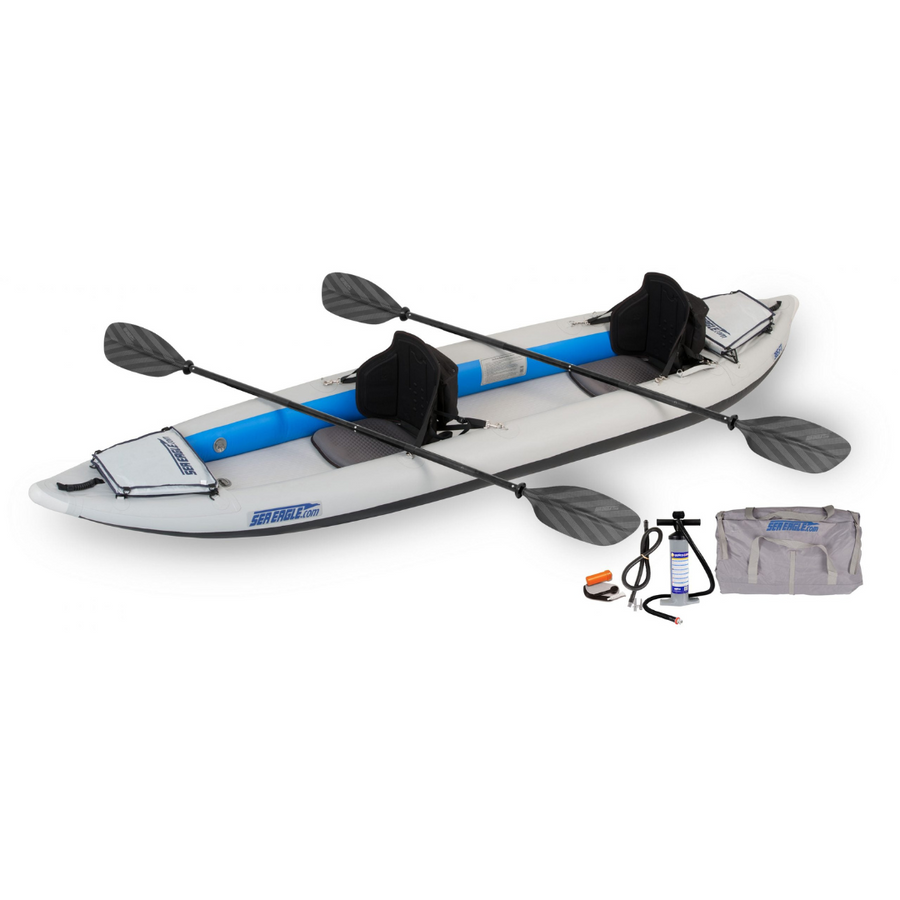
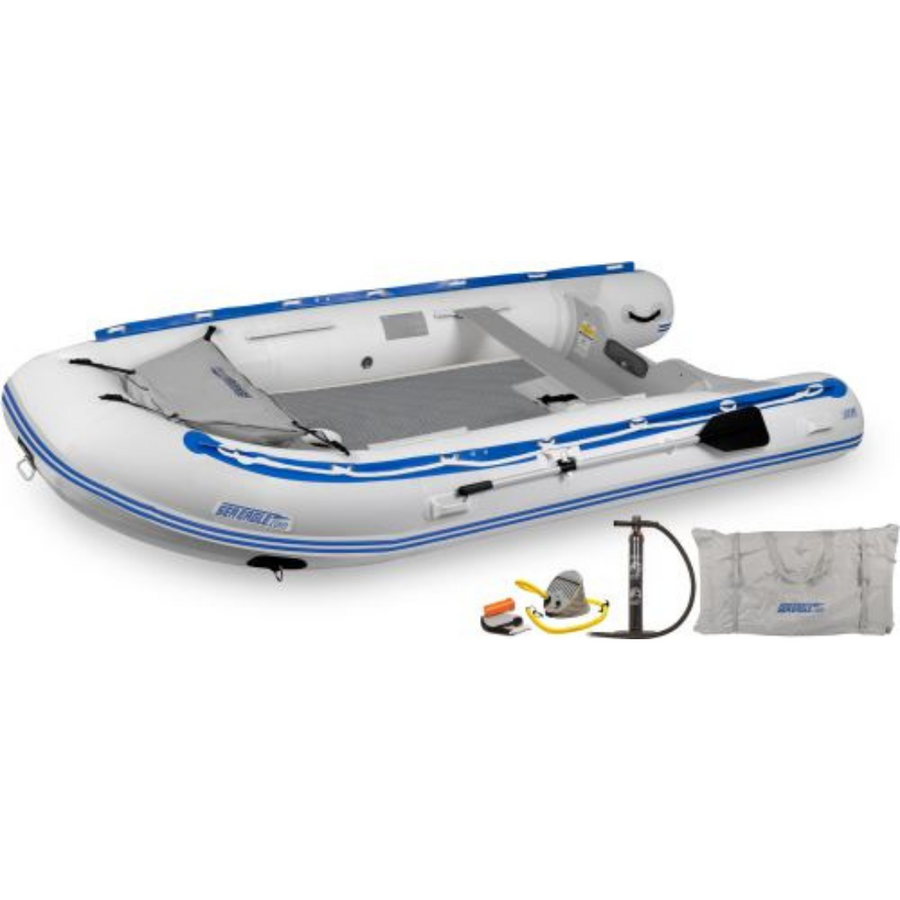
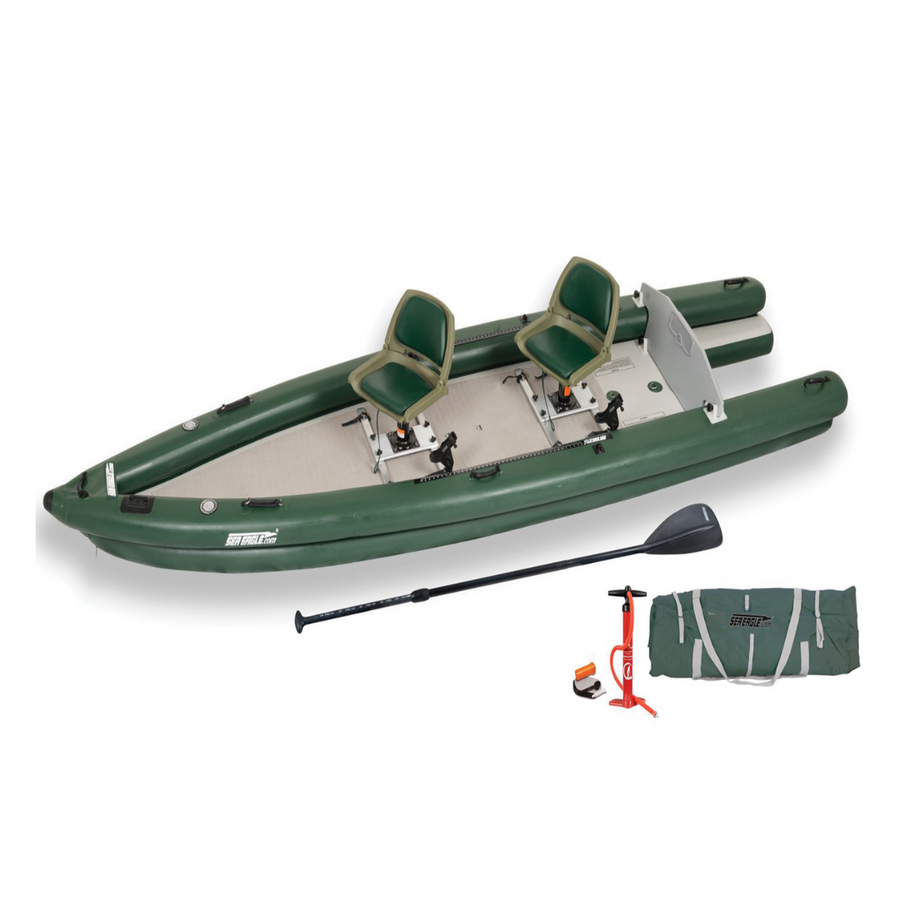
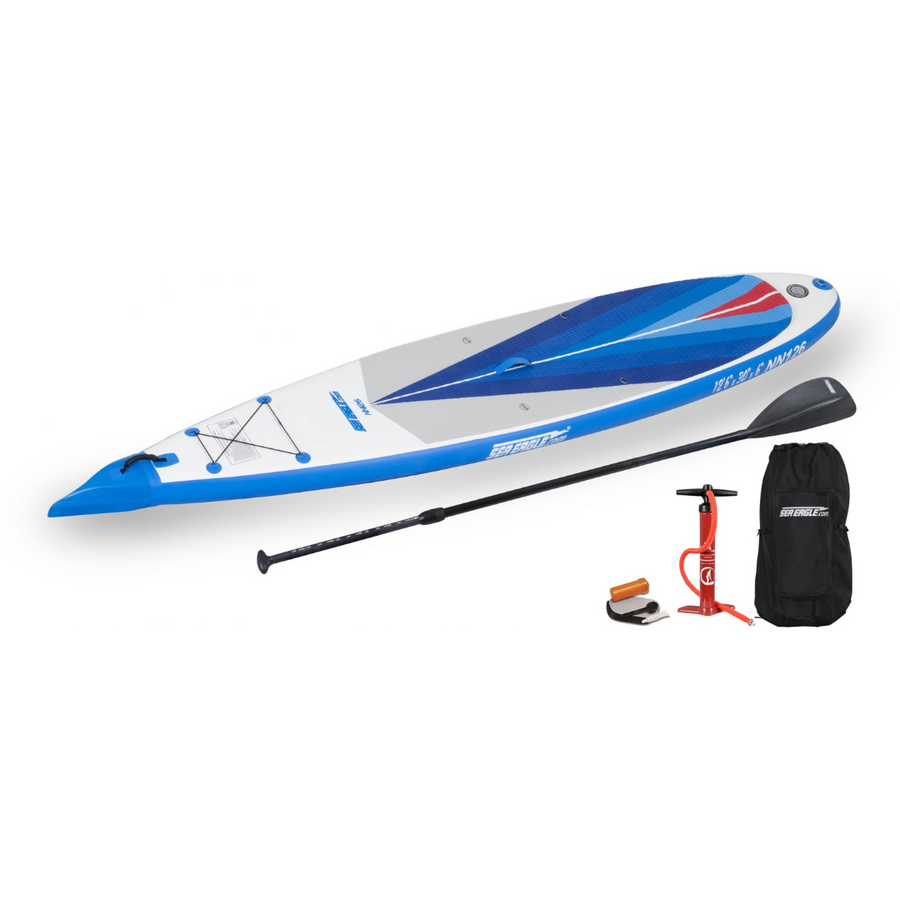
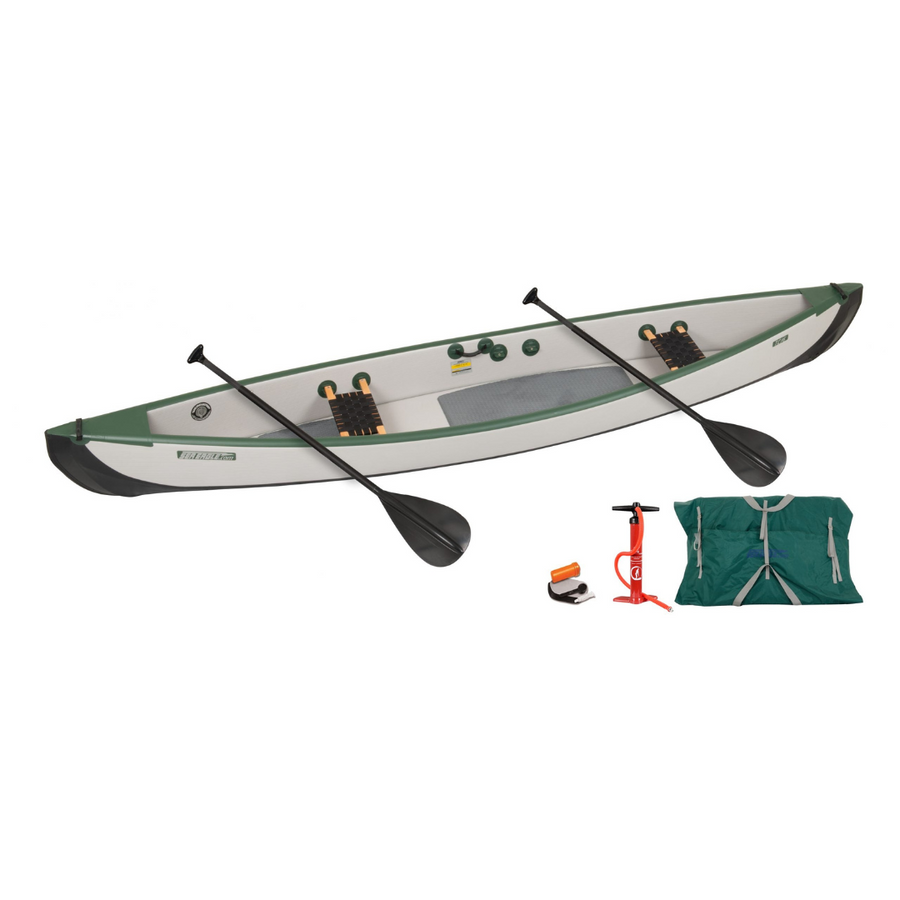
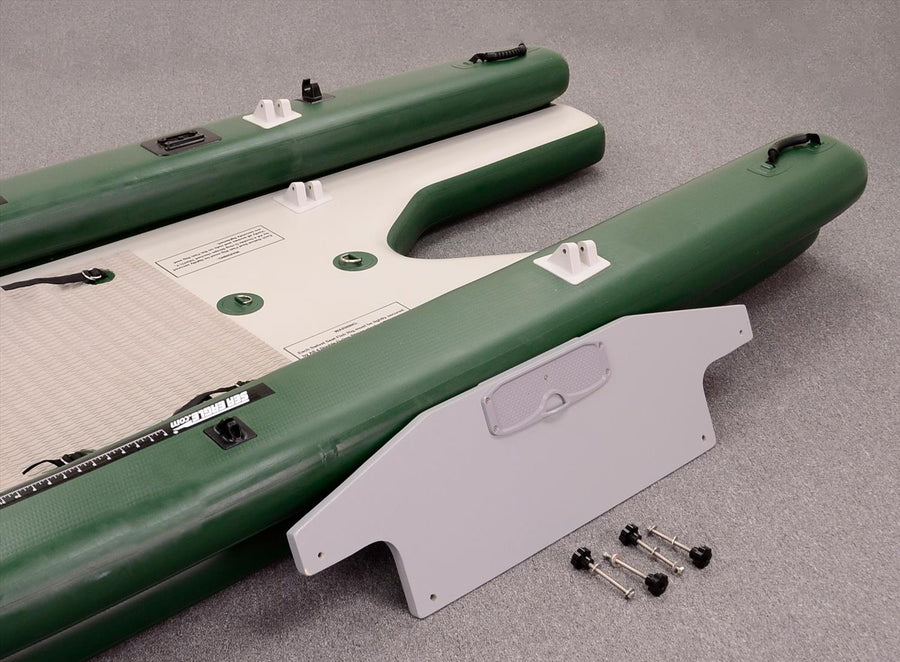


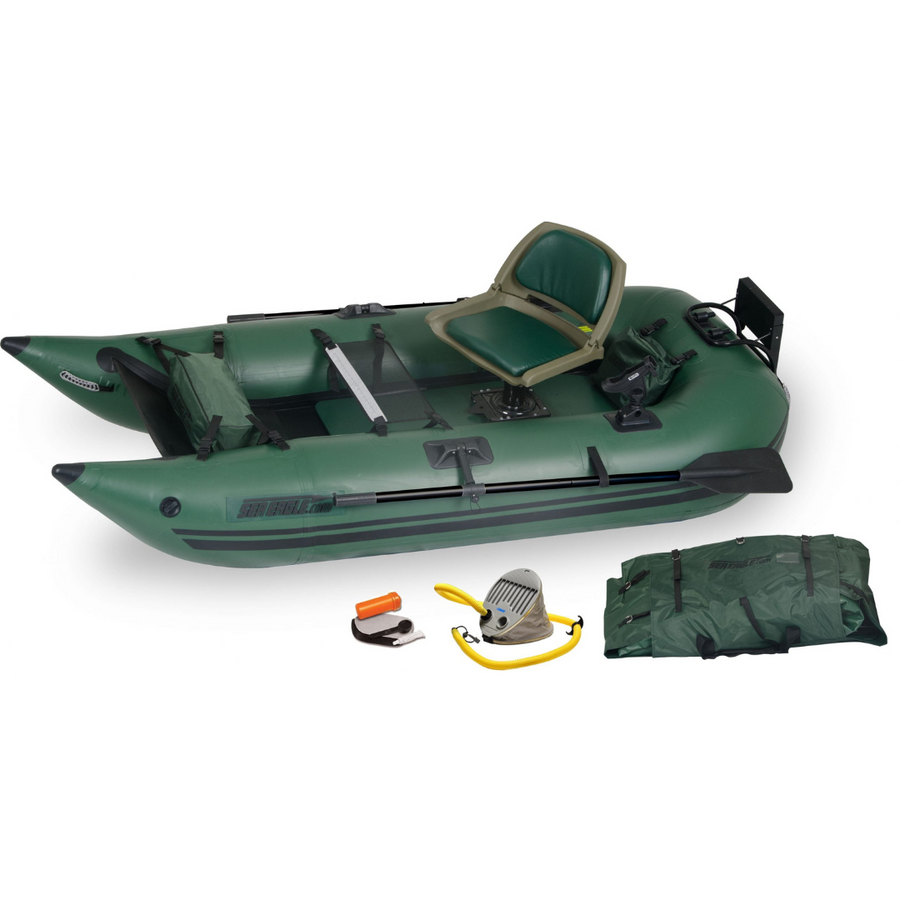
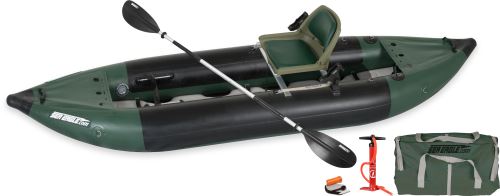
Leave a comment